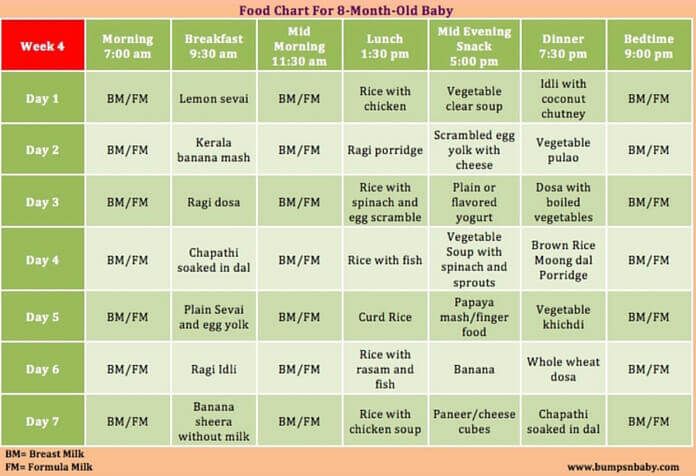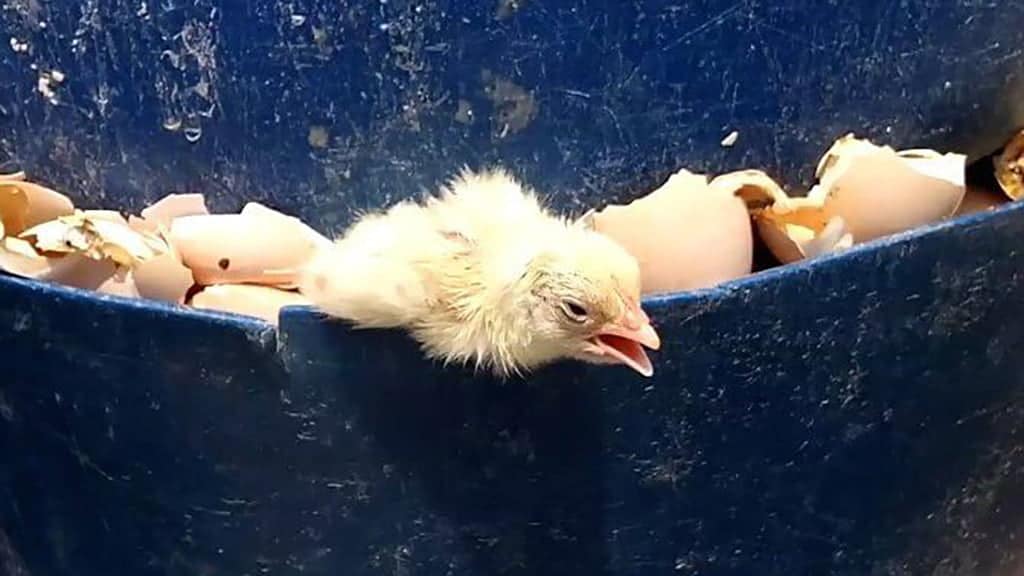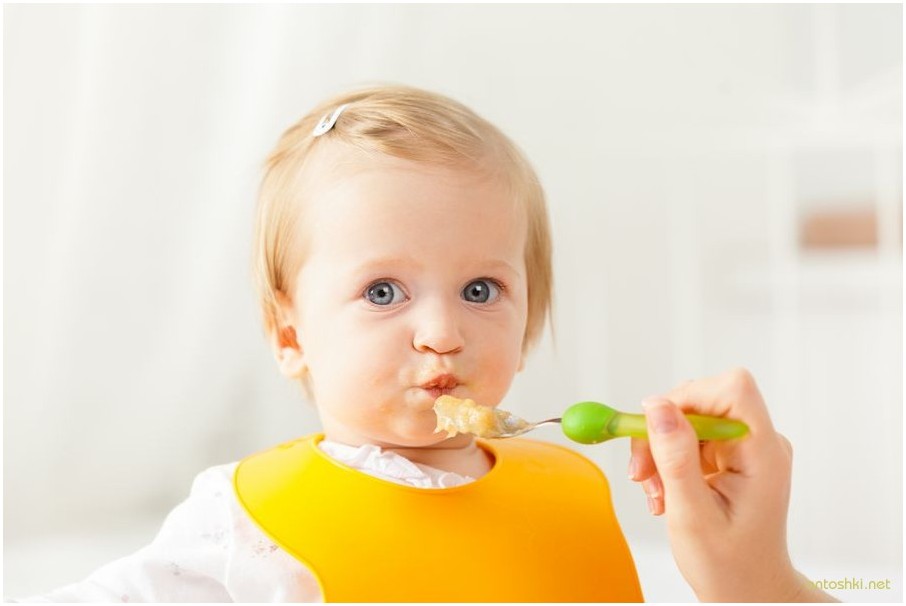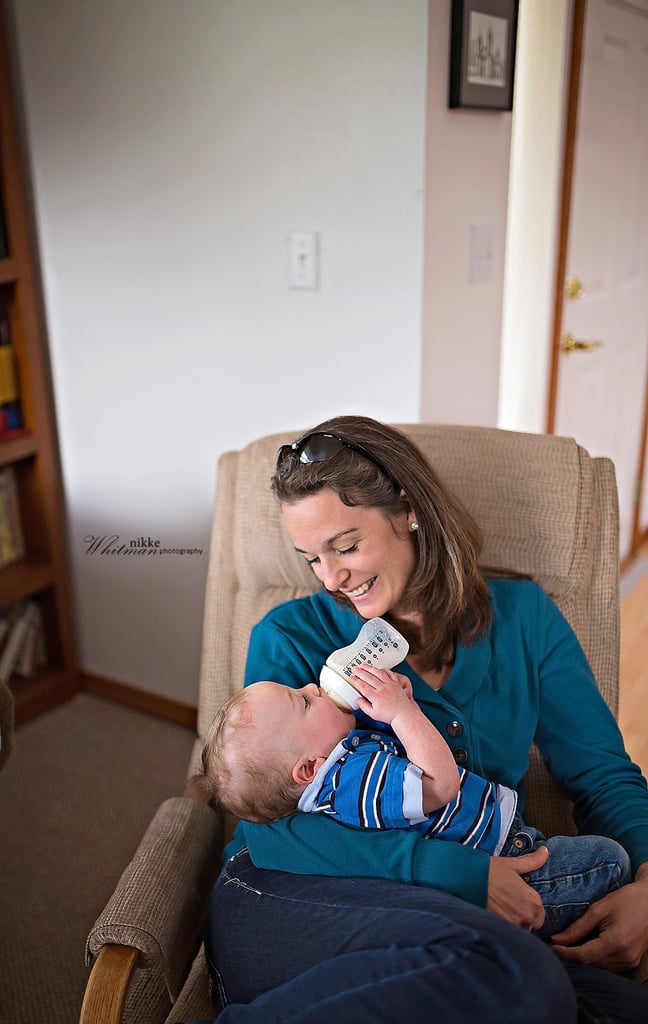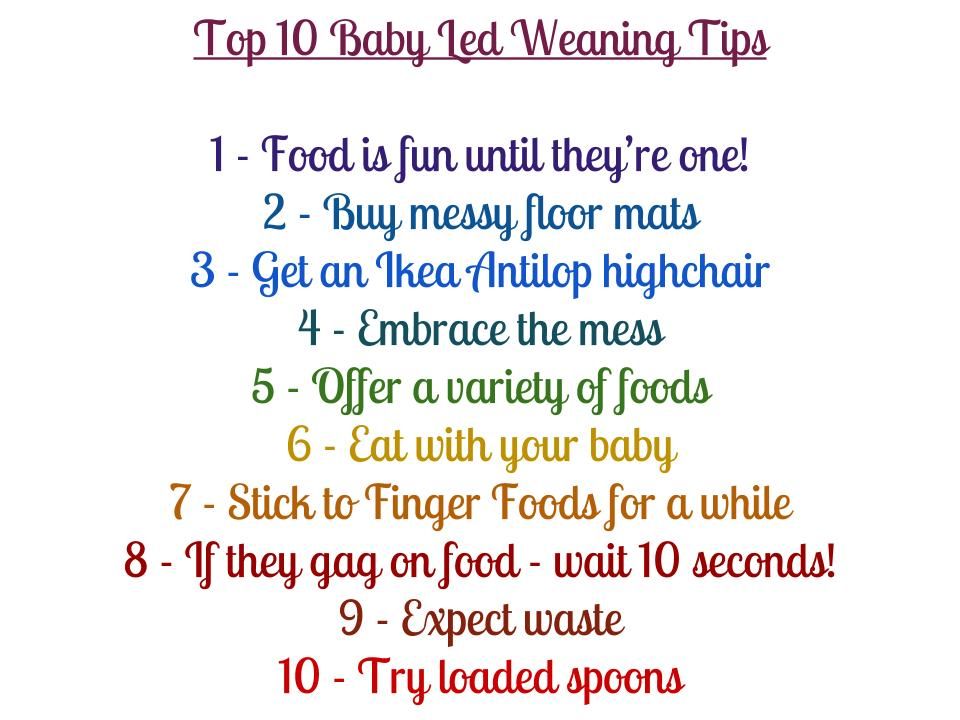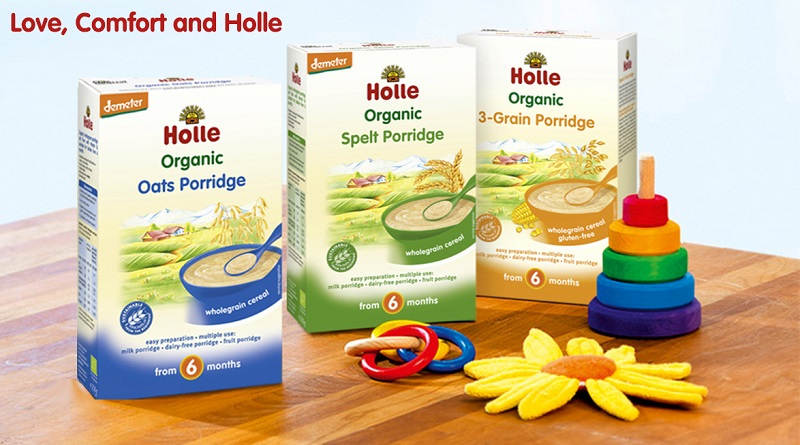Baby eating finger foods
Best Finger Foods for Babies: The Ultimate Guide
How exciting that your baby is about to graduate from mushy foods to finger foods! This is a big step in your little one’s development. However, you may be wondering when’s the right time to start finger foods, and how to tell that your baby is ready. We’ll answer all these questions and more, plus give you a list of the best finger foods to introduce to your baby first.
Introducing Finger Foods to Your Baby
So, when can babies eat finger foods? You can start to give your baby finger foods around the time they’re able to sit up independently and can bring their hands to their mouth. This may happen between the ages of 8 months old and 9 months old, but your baby may be ready a little sooner or later than this time.
Around this time, you may also notice that your baby is developing their pincer grasp and may be making chewing motions. These are both great indications that your baby’s ready for finger foods. Moreover, using their fingers to pick up foods will further develop your baby’s fine motor skills.
Some parents who adopt the baby-led weaning approach may start offering finger foods to their infants as early as 6 months old. This method skips spoon-feeding with solid foods and instead lets your baby take the lead in self-feeding with finger foods. Some believe this approach can decrease fussiness when it comes to introducing new foods, including finger foods, to your baby. Speak to your child’s healthcare provider if this method is something you’d like to try.
Giving your baby finger foods can help your little one learn to feed themself, just one step toward gaining independence. Self-feeding can be great fun for your baby. Even if much of the food doesn’t end up in your baby’s mouth, the fact that they’re exploring this new frontier is an accomplishment to be proud of.
First Finger Foods for Your Baby
As you begin choosing finger foods for your baby, check out the following ideas:
Steamed veggies like sweet potatoes, potatoes, carrots, green beans, peas
Soft, ripe fruits like bananas, berries, peaches (peeled), mangoes (peeled)
Whole-grain breakfast cereals (without nuts, clusters, or chunks)
Whole-grain pasta (cooked well)
Whole-wheat bread
Whole-grain crackers or wafers like teething biscuits
Soft meats like chicken
Cheese (mild)
Scrambled eggs.
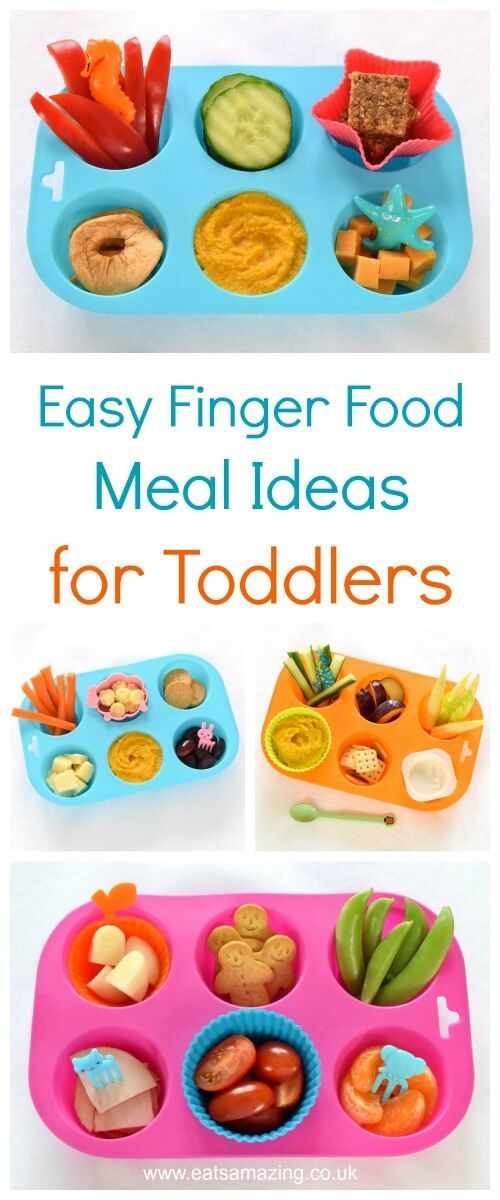
Be sure that any of the above finger foods are cut into small pieces. You don’t want your baby eating a piece that’s too big to swallow. And, make sure to watch them while eating.
Finger Food Safety
During this time babies are more likely to swallow foods without chewing them, whether they have a few baby teeth coming in or they have no teeth. Avoid giving any finger foods that require a grinding action to chew (this type of chewing is typically mastered around the age of 4), as these may pose a choking risk. Offer finger foods that are soft, easy to swallow, and broken or cut into pieces that your baby cannot choke on. A good rule of thumb is that soft and mushy finger foods are safe for your baby. Small, round, coin-shaped, hard, chewy, crunchy, slippery, or sticky foods may lead to choking. Here are some foods to avoid offering your baby when they start on finger foods:
Peanut butter (in chunks)
Meat (in chunks)
Cheese (in chunks)
Raw veggies (in large chunks or round shapes), including celery sticks, carrot sticks, baby carrots, cherry tomatoes, and peas
Raw hard fruit (in large chunks or round shapes), including apples, pears, and grapes
Nuts (whole)
Seeds
Popcorn
Chewing gum
Candies (hard, gooey, or sticky)
Hot dogs or meat sticks.
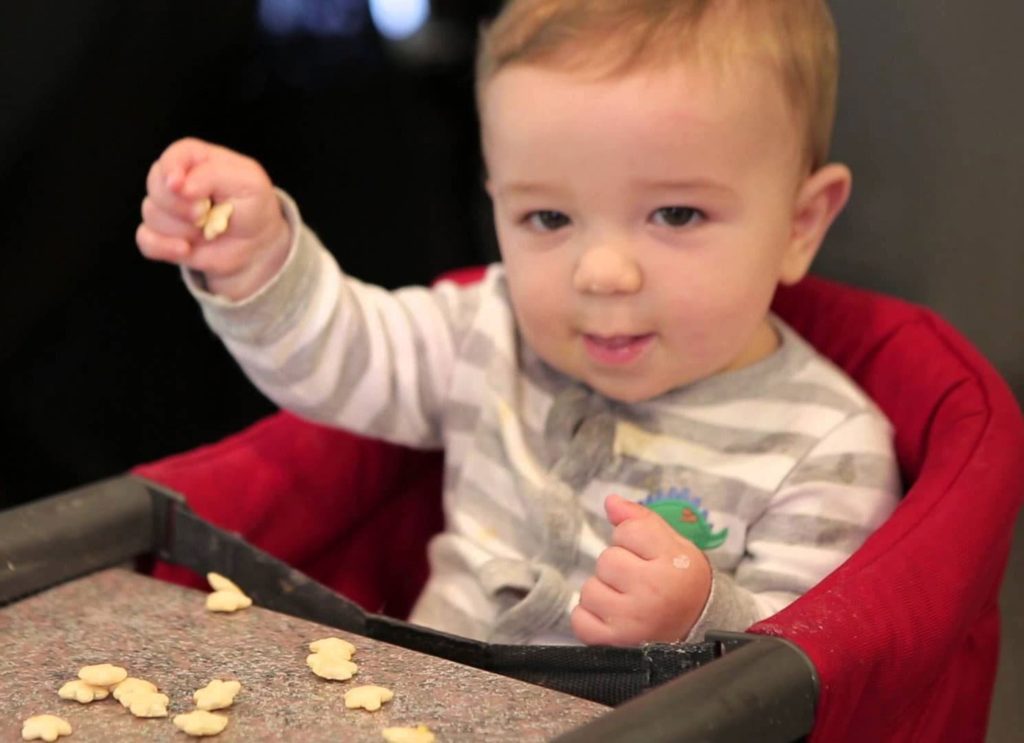
There are ways you can still give some of the above foods while making them easier to eat and less hazardous to swallow. For example:
Grapes or cherry tomatoes, cut in half
Creamy peanut butter spread thinly on whole-grain bread that’s cut into small squares
Hot dog, cut lengthwise and then cut into small 1/2-inch pieces.
Note on Food Allergies
Medical experts once recommended that parents avoid feeding their babies eggs, fish, and peanut butter since babies may be allergic to these foods. However, it’s now recommended that you introduce these foods early—while keeping a close watch for any reactions—since this approach can help reduce your child’s chances of developing food allergies. Before introducing peanut butter or peanut products, consult with your baby’s healthcare provider. Your baby is more likely to be allergic to these foods if
food allergies run in your family
your baby is known to have an egg allergy
your baby has eczema.
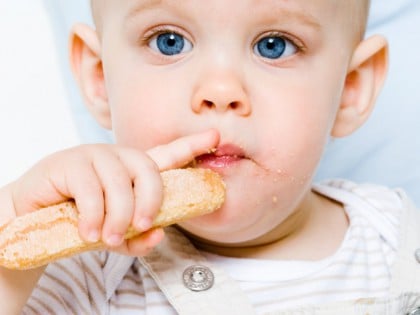
The Bottom Line
It’s time to introduce finger foods to your baby when you see that they’re able to sit up on their own, start bringing their hands to their mouth, and can use a pincer grasp to hold onto small items, like finger foods. This development happens around the age of 8 or 9 months old, but you may see it sooner or later in your baby.
In the beginning, you’ll want to introduce finger foods that are soft and easy to swallow, since babies at this age tend to swallow instead of chew even if they have a few baby teeth. Think steamed veggies and soft fresh fruits. You can also introduce whole-grain bread, crackers, cereal, or pasta if they’re cut into small pieces. Chicken, mild cheese, and scrambled eggs are also great options when served in small pieces.
Avoid hard foods like raw veggies and fruits, as well as chunks of nut butter, cheese, and meat. Whole nuts and seeds are not recommended, nor are chewing gum, candies, hot dogs, or meat sticks.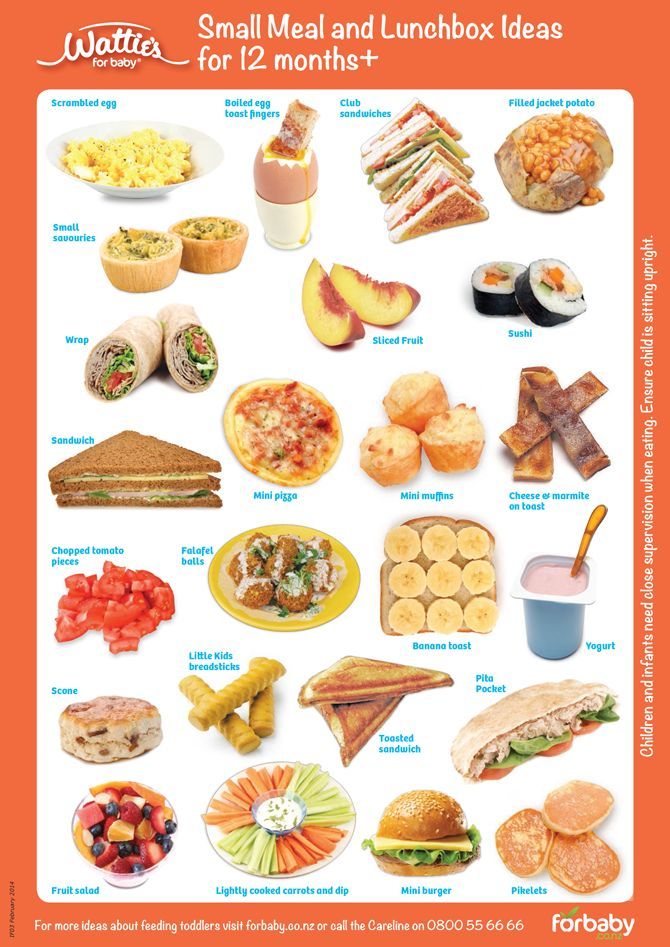 All these items can pose a choking hazard.
All these items can pose a choking hazard.
Transitioning to finger foods is a big step in your baby’s development and independence. Letting your baby self-feed with finger foods may be a bit messy at first, but you’ll both get the hang of it. Learn more about developmental milestones for your 9-month-old baby.
Best Early Finger Foods for Baby (With Tips, Visuals, and Recipes)
Use this list of safe, nutritious, and easy to eat finger foods for baby to help you know exactly what (and how) to offer at meals and snacks. Plus, find the best first finger foods, troubleshooting tips, and visuals of foods broken down by food group to keep things easy!
Finger Foods for Baby
After baby starts solids and is ready to move onto finger foods, you may feel a little confused by exactly what to serve and how to serve it. Which is totally normal because it can be scary to let baby feed themselves this way and we may not have any experience doing this—or we may have totally forgotten from our last kiddo!
This list of finger foods for baby will cover some great first finger foods to start with, then set you up with plenty of healthy options from each food group.
TIP: Find more info on starting solids here and the best foods to start with if doing baby led weaning or purees with baby.
Healthy Baby Food
I love sharing these ideas for baby food since they are easy to prepare and serve and because I know how hard it can be to continue to come up with flavorful and healthy meals and snacks for our little ones. Let me tell you, I’m on my third kiddo and it can be such a challenge to feed him during the chaos of parenting the rest of my crew! These foods are wholesome and nutritious—perfect for your baby.
TIP: I’m a big fan of SpoonfulONE, a company that offers the most complete way to introduce food allergens to our kids. They make mix-ins, puffs, and crackers that are yummy and easy for babies and toddlers to eat. Learn more about their pediatrician-approved baby foods here. (sponsored link)
Best First Finger Foods
When baby is around 9 months, you’ll notice that they’re able to pick up smaller pieces of food with two fingers. This is known as the “pincer grasp” and is a sign that they’re ready to start finger foods. To be clear, when I say “finger foods” I mean small pieces of food that a baby (or toddler) can feed themselves.
This is known as the “pincer grasp” and is a sign that they’re ready to start finger foods. To be clear, when I say “finger foods” I mean small pieces of food that a baby (or toddler) can feed themselves.
Here are some of my favorite ones to start with that are all super soft, safe to eat, and easy to pick up.
- Scrambled egg, broken up into small pieces
- Roasted sweet potato mashed and broken up into small pieces
- Fresh raspberries, broken up into smaller pieces
- Oatmeal, cooked according to package directions and allowed to cool
- Tofu, diced and sauteed lightly or steamed
- Ground beef, chicken, or turkey, broken up into small pieces or lightly mashed meatballs
- Shredded cheese or crumbled goat cheese
- Mashed sweet potato, in little pieces
- Peanut butter puffs
TIP: You can serve the tofu, ground meat, or meatballs in veggie puree from a pouch or a simple marinara sauce for extra moisture and flavor. Learn more about how and why to introduce peanut butter.
Learn more about how and why to introduce peanut butter.
Finger Foods for Baby: Fruits and Veggies
Some of my favorite early fruits and veggies to serve babies are:
- Mashed roasted sweet potato, broken up into small pieces
- Warmed frozen peas, slightly mashed if desired
- Roasted Zucchini
- Diced Roasted Sweet Potato or Butternut Squash
- Fresh blueberries, cut in half or quarters
- Fresh raspberries, broken into small pieces
- Banana, broken into small segments (they are less slippery this way versus slicing them)
- Avocado, diced and mashed slightly (be sure it’s ripe and very soft)
TIP: A good rule of thumb is to serve pieces of food that are about the size of a pea to start and soft enough that they are easy to squish between your fingers. This will be easy for baby to pick up and eat and will also reduce chances of choking.
Finger Food Ideas: Carbohydrates
Offering complex carbohydrates can provide fiber, a variety of textures, B vitamins, and more. Try these with your baby.
Try these with your baby.
- Spinach pancakes (moisten with applesauce or plain yogurt if needed; this recipe is particularly moist and great for babies)
- Oatmeal, cooked according to package directions and allowed to cool
- Baby Puffs
- Peanut Butter Puffs
- Rice (it’s easiest if it’s in little clumps so baby can pick it up; this Coconut Rice or this Cheesy Rice are both good options)
- Baby Banana Muffin
- O cereal (soften in nondairy unsweetened milk or yogurt as needed)
- Baked Oatmeal, diced
Finger Food Ideas: Proteins
Offering proteins will continue to expose baby to a range of nutrients. These are my go-tos for babies newer to finger foods—and toddlers too.
- Shredded cheese (thicker cuts are a little easier to pick up)
- Tofu, diced and sauteed lightly or steamed
- Flaked cooked wild salmon
- Lightly mashed meatballs
- Shredded chicken, cut up finely (we love this Butter Chicken to share with baby)
- Ground beef, turkey, or chicken, broken into smaller pieces
- Lightly mashed beans
- Scrambled eggs, broken up into small pieces
- Diced egg muffins
I’d love to hear any questions you may have, or if you have foods that your babies enjoy that I didn’t include here.
 Chime in below in the comments!
Chime in below in the comments!Prep Time 5 minutes
Cook Time 5 minutes
Total Time 10 minutes
Author Amy Palanjian
Cuisine American
Course Baby Food
Calories 124kcal
Servings 1
First Finger Foods (choose 1-3 per meal)
- ▢ 1 Scrambled egg (broken up into small pieces)
- ▢ 1/4 cup Roasted sweet potato, mashed and broken up into small pieces
- ▢ 1/4 cup Fresh raspberries (broken up into smaller pieces)
- ▢ 1/4 cup Oatmeal (cooked according to package directions and allowed to cool)
- ▢ 2 tbsp Tofu (diced and sauteed lightly or steamed)
- ▢ 2 tbsp ground beef, chicken, or turkey, broken up into small pieces or lightly mashed meatballs
- ▢ 2 tbsp shredded cheese or crumbled goat cheese
- ▢ 1/4 cup Mashed sweet potato (broken into little pieces)
- ▢ 1/4 cup Peanut butter puffs
Fruits and Veggies
- ▢ 1/4 cup mashed roasted sweet potato (broken up into small pieces)
- ▢ 1/4 cup warmed frozen peas
- ▢ 1/4 cup Roasted Zucchini
- ▢ 1/4 cup diced Roasted Sweet Potato or Butternut Squash
- ▢ 1/4 cup blueberries (cut in half or quarters)
- ▢ 1/4 cup raspberries (broken into small pieces)
- ▢ 1/4 cup banana slices (broken into small segments—they are less slippery this way versus slicing them)
- ▢ 2 tbsp avocado (diced and mashed slightly—be sure it's ripe and very soft)
Whole Grains and Carbohydrates
- ▢ 1 Spinach pancakes (moisten with applesauce or plain yogurt if needed; this recipe is particularly moist and great for babies)
- ▢ 1/4 cup Oatmeal (cooked according to package directions and allowed to cool)
- ▢ 1/4 cup Baby Puffs
- ▢ 1/4 cup Peanut Butter Puffs
- ▢ 1/4 cup fully cooked rice (it's easiest if it's in little clumps so baby can pick it up; this Coconut Rice or this Cheesy Rice are both good options)
- ▢ 1 Baby Banana Muffin
- ▢ 1/4 cup O cereal (soften in nondairy unsweetened milk or yogurt as needed)
- ▢ 1/4 cup Baked Oatmeal (diced or regular oatmeal broken into little pieces)
Dairy
- ▢ 2 tbsp Shredded cheese (such as mozzarella)
- ▢ 2 tbsp Tofu (diced and sauteed lightly or steamed)
- ▢ 2 tbsp flaked cooked wild salmon
- ▢ 1 lightly mashed meatballs
- ▢ 2 tbsp finely shredded chicken (we love this Butter Chicken to share with baby)
- ▢ 2 tbsp ground beef, turkey, or chicken (broken into smaller pieces)
- ▢ 2 tbsp lightly mashed beans
- ▢ 1 Scrambled egg (broken up into small pieces)
- ▢ 1 Diced Egg muffins
For each meal or snack, choose 2-3 foods from a mix of food groups.
 Aim to include some fat in most meals and protein in many too.
Aim to include some fat in most meals and protein in many too.Prepare the food, cutting into small pieces and/or mashing as needed to make the food easy to eat.
Start with small portions and allow more as baby indicates according to their hunger.
- Store leftovers in an airtight container for 3-5 days in the fridge.
- Many foods you cook for your family will work as baby finger foods—just be sure they are easy to squish between your fingers and the pieces are small and easy to chew.
- Babies very normally make a lot of faces when they eat, so don't assume they don't like something just because they scrunch their nose!
- Flavors and textures can take time to learn to eat, so continue offering foods in small portions even if baby hasn't liked them in the past—and make sure they taste good to you!
Calories: 124kcal, Carbohydrates: 14g, Protein: 7g, Fat: 4g, Saturated Fat: 1g, Polyunsaturated Fat: 1g, Monounsaturated Fat: 2g, Trans Fat: 1g, Cholesterol: 164mg, Sodium: 81mg, Potassium: 344mg, Fiber: 4g, Sugar: 5g, Vitamin A: 9857IU, Vitamin C: 18mg, Calcium: 51mg, Iron: 1mg
Tried this recipe?Rate in the comments and tag @yummytoddlerfood on IG!
Eating with your hands and not getting fat: a new trend in baby feeding - Parents.
 ru
ru About nutrition
- in fact, it is a continuation of pedagogical complementary foods - a trend that appeared in Russia relatively recently, but has already become widespread. What it is? Pedagogical complementary foods are not an independent complementary feeding system in its traditional sense (it does not contain specific recommendations regarding the sequence of introducing products and their combinations), but a way to introduce a child to “adult” food and table behavior skills. He implies that if the baby shows interest in food on her mother’s plate, she should offer him this food in the amount of a “microdose” (a droplet on the tip of a teaspoon or a piece the size of a pea) without prior grinding. The main slogan of pedagogical complementary foods is: "Put the child at the common table when the whole family is together, and let him choose what he likes."
Why
Children eat with their hands more conveniently and “tastier” than cutlery, which is why they do it with pleasure.
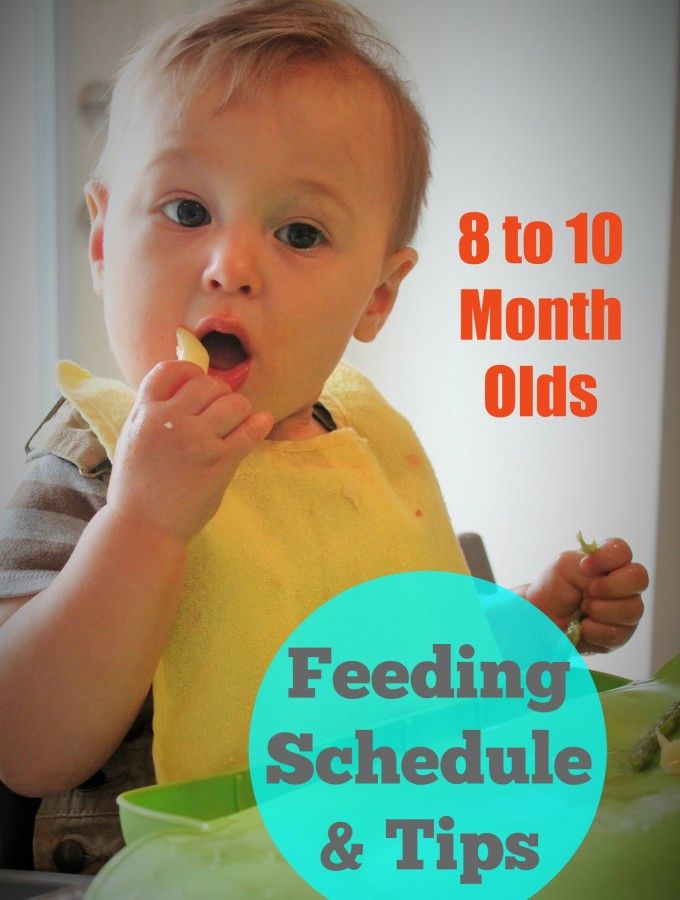 But finger food is not just entertainment: there are many advantages to eating with your fingers.
But finger food is not just entertainment: there are many advantages to eating with your fingers. -
Improving the ability to chew. It does not happen that up to a year the baby received only breast milk, and then suddenly began to chew the pieces wonderfully. The baby learns to chew gradually, so it is very important not to miss the age stages of this skill and offer solid foods in a timely manner.
-
Grasping exercises. By eating with his hands, the child masters the "tweezer" grip (children grab small pieces of food using the thumb and forefinger), which is necessary for the development of fine motor skills. In the future, this will help them perform many exercises in which they need to be able to capture small objects: lay out a mosaic, sculpt, draw, embroider. In addition, the development of a "tweezer" grip prepares the child's hand for writing.
-
Correction of eating behavior. By the age of two, it has already been formed in some way, and if before the diet was scarce and monotonous, when accustomed to the “adult table”, the baby may reject new foods.
"Finger food" - first from mom's plate, and then from your own - will help the child to harmoniously move on to a common meal.
-
Way of knowing the world around. Eating with hands at an early age has a positive effect on child development in general: the baby receives a lot of information - visual, tactile, olfactory, gustatory and even auditory (foods come in different colors, tastes, textures - they can crunch, squish, etc.). This is very useful: in addition to the fact that the child learns to be independent, he also conducts a kind of identification of dishes on the table.
-
- Photo
- Compassionate Eye Foundation/Three Images/Getty Images
- Photo
- Kumacore/Getty Images
-
Do not breastfeed your baby: the risk of choking is much lower if the baby is seated across from you in a high chair.
-
Do not offer food to your baby when he is upset, overexcited, crawling or watching TV: small pieces of food are potentially dangerous - they can easily be put into the nose or ear, and also try to inhale.
Never leave a child unattended while eating!
-
For the same reason, do not give him small dense rounded foods: grapes, nuts and raisins, green peas, olives. Cut vegetables and fruits of a dense texture (apples, cucumbers, carrots, celery) into small cubes.
-
Discard fish: small, thin and elastic bones are very difficult to remove from it.
-
Forget sausages and sausages: they are very hard to chew and swallow.
-
If you use a nibbler, make sure the nets are intact and clean. And, of course, be sure to wash your hands before eating - both children's and your own.
- Photo
- Yiu Yu Hoi/Getty Images
-
Vegetables.
They must be cooked so that they are soft, peeled and de-seeded. Diced boiled potatoes are a great food to eat with your hands. Small soft cubes of boiled carrots, broccoli, pumpkins are also perfect for a child up to a year old. A treat for older kids: slices of cucumber or sweet pepper - these vegetable sticks are conveniently dipped in various sauces.
-
Fruit. Small cubes of watermelon, melon, ripe banana, pear will do. Cut them into small plates or sticks to make it easier for the baby to bite off.
-
Everything else. Also, soft pasta (tubes, horns, shells, bows), egg yolks from quail eggs and small pieces of soft cheese (tofu, goat or mozzarella), steamed meatballs, pieces of chicken or turkey fillet will be useful and perfect for eating with your hands . Cut pancakes into thin strips - you can dip them directly with your hands in yogurt, sour cream or fruit puree.
- Psychologists' advice
- Rule #1. Accept the fact that the child has his own taste
- Rule #2. Don't be afraid of dirt in the kitchen
- Rule #3. Praise for independence
- Why a child refuses cutlery and eats with his hands
- Age.
One-year-old children still do not know how to hold a spoon, but they already want to eat on their own. It is easier for them to grab a piece of meat with their small fingers or to catch vegetables from the soup. Parents need to develop a food interest in a child, but in no case should they be forced to hold a spoon. In the end, you can put on baby home clothes and tie a bib, and cover the table with oilcloth. The kid learns the world, and this is a necessary stage in human development.
- Attracting attention. If the child is already old enough, but continues to grab food with his hands, perhaps in this way he attracts the attention of parents. Most likely, the child is not given free time, and at least he will attract attention to himself. Analyze whether your daughter or son has enough communication with you. Put aside household chores and do something interesting together: draw, sculpt, read, walk. Children grow up very quickly, so you need to appreciate every minute spent together.
- Crisis 3 years. The baby considers himself an adult and independent, does not listen to what his parents tell him. He takes food with his hands, thereby demonstrating that he knows better how to behave. During a crisis, do not put pressure on the child and force him to do something. Also, you can not compare the baby with other children who already know how to eat on their own. Show by example how to behave at the table.
- Stressful situations. Moving, divorce of parents, adaptation in kindergarten - all this can affect the child's psyche. By his behavior, the child shows a protest against a change in the usual way of life. It is advisable to contact a child psychologist to understand the reason for this behavior.
- Reluctance to become an adult. Especially often this can be observed in families where a small child appears. The older brother (sister) intentionally takes food with their hands, smears it on the table or walls, and begins to distort words, imitating the kids.
Eat little, baby!
British scientists have proven that "eating with your hands" reduces the risk of obesity in a child. They conducted an experiment in which more than 150 children aged 6 months to 6 years took part. Half of the parents suggested that their children take pieces of solid food from the plate, the rest - fed from a spoon. The results of the study showed that children who joined the common table through finger food were less likely to suffer from overweight in middle and high school age. Domestic doctors do not quite agree with the conclusion of foreign experts: if the child is not persuaded and not blackmailed (“a spoon for mom, a spoon for dad”, “eat - I’ll give you candy!”), He, eating even with the help of cutlery, he will determine for himself the optimum amount of food to eat. The main thing is that high-quality and healthy products are always present on the children's plate.
When
At what age can you give small pieces of food to a baby? As soon as the baby begins to sit confidently without assistance. It’s good if at 4.5 months, under strict parental guidance, he grinds a dry bagel or a piece of apple in a nibbler with his gums. Do not forget that the consistency of the main complementary foods (porridge, mashed potatoes, etc.) should gradually become thicker so that the child has a need to work with his jaws, lips, tongue. Then you can reduce the degree of grinding: use a meat grinder, grater, fork. All this will gradually teach the baby to fully chew food. Usually, from 7 to 12 months, this skill is successfully formed, and at the age of one, if the child received pediatric complementary foods according to age, he may well be fed with food with his hands on his own.
“Food with hands” is suitable for children from 7–8 months to 1.5 years. Then the child should make friends with cutlery and learn to get pleasant tactile sensations in other ways.
How many
Food with hands is always present in our diet, because bread, pies, chicken wings, khinkali, desserts like “oriental sweets”, and many other things we eat without cutlery . Therefore, there will always be finger food in the child's diet, and it is not necessary to artificially observe its volume. But it is necessary to accustom the baby to cutlery: at eight months he should eat with a spoon with his mother, and at 1.5 years old he should use cutlery on his own. It is both civilized and more hygienic.
How to
Be patient: it is not easy to encourage baby food with your hands, because at first more of it will end up on the floor instead of your mouth. Cover the table with oilcloth and use a plate with a suction cup - it will be more difficult for your baby to knock it over. Also, special containers like lunch boxes with internal dividers are good for finger food: arrange the edible pieces in different sections, and let the baby explore their contents.
Safety Instructions
What
A good food to eat with your hands is one that can be broken into small pieces that are easy to chew or even dissolve in your mouth. The main thing is to make sure that the baby will not only be able to easily hold them in his hands, but also will not choke.
Arrange thick dips of different colors (yellow for cheese, green for spinach or avocado, red for berries) on a plate in circles, imitating a palette. Let the baby mix them with his hands, getting new colors and flavors.
Trying by mouth
Practically all parents know today that it is useful for a baby to touch different objects with his hands from a very early age. The fingertips are equipped with many nerve endings, and stimulating them not only transmits a lot of information to the brain, but also relieves nervous tension. It's safe to say that eating with your hands is soothing. Any tactile sensations have a beneficial effect not only on the nervous system, but, according to some reports, increase immunity. When a baby eats with his hands, he is not so much satiated as he explores unfamiliar objects with his mouth (in tactile terms, the mouth provides him with more effective information than hands). Some children under two years of age retain the need to study objects in this particular form: “Everything is dragged into the mouth,” mothers complain. Nevertheless, at the age of two, a child should be as accustomed to a civilized meal as possible - to be able to use a spoon and a fork. If the baby continues to eat with his hands, this is either from a lack of education, or from a lack of attention and a lack of tactile sensations, which at this age should be replenished in other adequate ways (with the help of mother's hugs, on a carpet with favorite toys).
More useful materials on how to feed your baby - in our channel on Yandex.Zen.
Evgenia Karpovskaya
norm or deviation ❗️☘️ (͡ʘ ͜ʖ ͡ʘ)
Contents
Many mothers, having heard enough of their friends and relatives, begin to worry because their baby has not yet learned how to use cutlery. The baby takes food with his hands, smears it on the table and clothes, scatters it around the kitchen - such a picture will infuriate even the calmest mother. When can you start learning to hold a spoon in your hands and eat on your own?
Advice from psychologists
Undoubtedly, the endless washing of children's things, bathing the child after each meal, daily cleaning bring additional trouble to young parents. But most of all, mothers worry that their baby is lagging behind in development, because the neighbor’s boy is only a year old, and he is already actively using a spoon.
It must be taken into account that before the introduction of complementary foods, the baby is not interested in the food that the parents eat. At about 6-7 months, he begins to understand that, in addition to mother's milk and formula, there are other products. And children begin to confidently hold a spoon, as a rule, not earlier than 2 years.
At six months, the baby learns to sit, and along with this skill comes an interest in "adult" food. Psychologists advise mothers to give a baby a plastic spoon in the hands of the baby with the start of complementary foods. Mom feeds the baby vegetable or fruit puree, and he, in turn, twists his own cutlery in his hands. Firstly, it helps to develop fine motor skills, which is important for full development. Secondly, the child gradually gets used to the fact that a spoon is needed while eating.
Getting used to can take a long time, and parents should not be afraid of this. Mom needs to remember a few simple rules so that the baby subsequently actively uses cutlery.
Rule #1. Accept the fact that the child has his own taste
In order to understand what foods your baby likes, you need to regularly offer him different types of food. At some point, the baby may refuse the offered food and eat only a few products. Also, with age, the child's taste preferences may change. When the main products are introduced into the baby's diet, offer him various variations of dishes: vegetable and fruit purees, cereals, pieces of fruits and vegetables. Experiment with the baby, and then he will be able to choose what he likes.
Interesting: How to teach a child to speak in a calm tone
Rule #2. Don't be afraid of dirt in the kitchen
At first, mothers are sensitive to the spread of porridge on the floor and traces of broccoli on a white T-shirt. Time will pass, and you will remember this period with a smile. And the stains are easily washed with the help of special products, and the wallpaper can be washed. The child learns the world, and does not try to spite his parents to spoil the fresh renovation in the kitchen. Often mothers make the mistake of spoon-feeding their babies until adulthood. And then they wonder why the child does not want to eat on his own. It's just that he is not interested, he perceives food intake as a mandatory program. I ate a spoon for mom, a spoon for dad, that's good.
Psychologists say that often these children then suffer from obesity and other eating disorders.
Rule #3. Praise for independence
If you are spoon-feeding your baby and he suddenly snatches the device from your hands, do not interfere with him. On the contrary, praise the child and invite him to try to eat on his own. At the same time, arm yourself with a second spoon. While the baby will try to scoop up the porridge and bring the spoon to his mouth, you can calmly feed him from your spoon.
If at lunch a child takes out pieces of meat with his hands and tries to put them in his mouth, in no case scold him. Let the little man do what he has in mind. Parents who forbid their kids to do something on their own should not be surprised that their children will later eat from a spoon. It is better to let the child figure out for himself how to scoop up porridge or soup, bring it to his mouth, put the spoon back down. The baby learns elementary things by experience, and it is better not to interfere with parents.
Interesting: In what simple ways can children develop spatial thinking and discover many successful professions for them
Why a child refuses cutlery and eats with his hands
There are several reasons why a baby likes to take food with his hands more:

